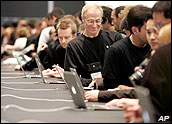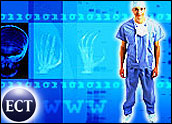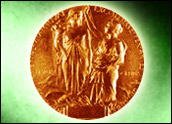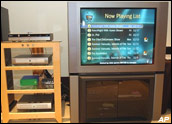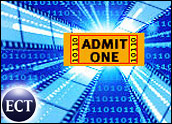
One of the nation’s largest electronic voting systems has a software flaw that can cause it to drop ballots, its manufacturer has revealed. Premier Election Solutions — a subsidiary of Diebold — says in a product advisory that its machines that operate in 34 states are affected by the glitch.
The problem, it is believed, has been present in the program for the past decade. The company told the Associated Press it’s confident election workers would have caught the mistakes during certifications over that time period and thereby prevented any votes from being excluded.
With the presidential election now just over two months away, the revelation does little to calm concerns over voting accuracy and validity. Premier Election Solutions insists it won’t affect the November results, but activists are already calling for a stronger long-term solution.
Finding the Problem
Election leaders in Ohio first noticed the problem. They found 1,000 votes excluded from the count during the March primary, though they say the votes were manually added in and included in the final total. The issue, it seems, occurs when more than one ballot memory chip is being inputted into the central counting system at the same time. Because of that, larger voting jurisdictions are most likely to be affected.
So how would the dropped votes be caught? Election officials typically cross-check the final results to make sure the central system shows the same number of memory chips that they actually fed in. If it doesn’t match, they can then take steps to manually input the data. There is no real indication, however, whether all discrepancies were in fact caught and corrected during the past 10 years in which the problem has existed.
Premier initially blamed the glitch on external factors: first, a conflict with anti-virus software on the Ohio computers, and later, a human-based error. It now admits those assessments were wrong.
Tricky Timing
The timing on this discovery, no doubt, is far from ideal — particularly in a presidential race where a small number of votes could conceivably make a difference.
“This is the sort of thing that is going to just further undermine our confidence among voters in the voting technology that’s being used very widely right now,” Alan Abramowitz, professor of political science at Emory University, told TechNewsWorld. “There’s already been widespread criticism of the touchscreen technology and the lack of paper trail, which means you don’t have a meaningful recount capability,” he said.
All those factors combined have led to a movement back toward optical scanning, Abramowitz explained, which provides a more reliable paper backup in case a recount becomes needed. While it may be too late to enact a widespread change for November, Abramowitz suspects a significant reform could come soon after.
“I would expect that over the next couple years as we move toward 2010 and ’12, we’ll likely see more movement and maybe a further push from Congress toward setting up some kind of uniform national system. We’re probably the only major democracy in the world that has this kind of highly decentralized system now,” he pointed out.
“It makes designing the ballot and coming up with an efficient method of recording and counting votes much more complicated,” he added.
Open Source Suggestion
The ongoing debate has also sparked a movement for an open source-based election system — a fight being spearheaded by the Open Voting Consortium. The not-for-profit organization asserts that removing the secrecy of voting software and opening up the process to the public would wipe many of the problems away.
“Testing software is actually a lot of work, and it’s hard,” Open Voting Consortium President Alan Dechert told TechNewsWorld. “You want to get that out there where everybody can feed on it and make it really robust,” he said.
The Consortium has developed its own open source software to power elections. It tested the system at the recent LinuxWorld technology conference in San Francisco, holding a mock presidential election with 10,000 voters. The whole thing, Dechert said, went off without a hitch — and, he suggests, shows how easily his model could succeed.
“Our system is all open source — it’s fully open to public scrutiny. Things that are glitches in the system aren’t going to sit there unnoticed for 10 years,” he commented.
The group’s software is already publicly available. While it will take time to get any kind of federal approval, Dechert said the software will be ready for use in local city elections by next year. Whether or not election officials choose to adopt it, of course, is yet to be seen.

